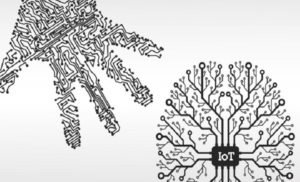- The cloud and analytics powered IoT platform is integrated with a Geographical Information System (GIS)
- The National Jal Jeevan Mission in collaboration with Tata Community Initiatives Trust (TCIT) and Tata Trusts recently completed pilot projects in several remote villages
 The Jal Shakti Ministry said that it has decided to use sensor-based Internet of Things (IoT) devices to effectively monitor the implementation of Jal Jeevan Mission (JJM) in more than six lakh villages.The National Jal Jeevan Mission in collaboration with Tata Community Initiatives Trust (TCIT) and Tata Trusts recently completed pilot projects in several remote villages of Uttarakhand, Rajasthan, Gujarat, Maharashtra and Himachal Pradesh, it said in a statement. A key feature of these pilots has been the use of frugal yet sturdy sensors, which makes the solution scalable and sustainable.
The Jal Shakti Ministry said that it has decided to use sensor-based Internet of Things (IoT) devices to effectively monitor the implementation of Jal Jeevan Mission (JJM) in more than six lakh villages.The National Jal Jeevan Mission in collaboration with Tata Community Initiatives Trust (TCIT) and Tata Trusts recently completed pilot projects in several remote villages of Uttarakhand, Rajasthan, Gujarat, Maharashtra and Himachal Pradesh, it said in a statement. A key feature of these pilots has been the use of frugal yet sturdy sensors, which makes the solution scalable and sustainable.
A key challenge that the team faced that it was to develop a robust solution at a fraction of the water infrastructure costs without compromising on quality or functionality. These costs are expected to reduce further at scale. The cloud and analytics powered IoT platform is integrated with a Geographical Information System (GIS).
Data will drive improvement in service delivery
It said that the IoT-based remote monitoring provides near real-time information without any manual intervention by using sensors. This would not only allow effective monitoring and management on-ground. It would also allow real-time visibility to state water supply officials and citizens.Real-time measurement and monitoring is critical for rural drinking water supply schemes, with enormous gains in terms of operational efficiencies, cost reduction, grievance redressal. It said that the data will drive improvement in service delivery and instil transparency for precious natural asset such as water.
Several types of sensors have been deployed including flow meters, ground water level sensors, chlorine analysers, pressure sensors, pump controller to measure all the relevant aspects of water service delivery. These are quantity, duration, quality, pressure, and sustainability — in addition to providing operational efficiencies.
It said that the pilots have led to several outcomes as it has helped identify distribution issues such as outages, leakages, low pressure and led to resolution across sites. It recently alerted both officials and community regarding fast depleting groundwater levels that led the villagers to build a source strengthening structure to recharge their borewell.
The statement said that other Other benefits observed include efficient and responsible use of water by community and reduced cost of operations through data-enabled leak detection, predictive maintenance, and automation.









